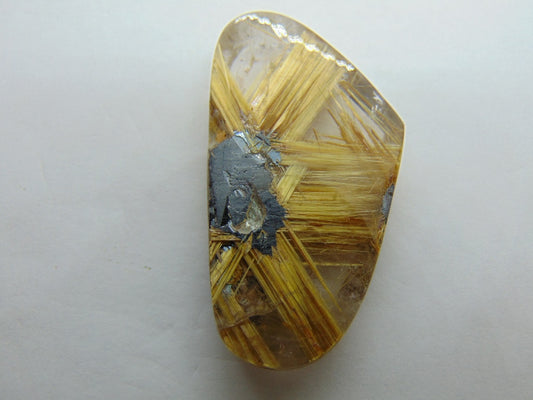Collection: RUTILE GOLDEN
Rutile has among the highest refractive indices at visible wavelengths of any known crystal, and also exhibits a particularly large birefringence and high dispersion. Owing to these properties, it is useful for the manufacture of certain optical elements, especially polarization optics, for longer visible and infrared wavelengths up to about 4.5μm.
Natural rutile may contain up to 10% iron and significant amounts of niobium and tantalum. Rutile derives its name from the Latin rutilus, red, in reference to the deep red color observed in some specimens when viewed by transmitted light.
Rutile is found as an accessory mineral in some altered igneous rocks, and in certain gneisses and schists. In groups of acicular crystals it is frequently seen penetrating quartz as in the fléches d'amour from Graubünden, Switzerland. In 2005 the Republic of Sierra Leone in West Africa had a production capacity of 23% of the world's annual rutile supply, which rose to approximately 30% in 2008. The reserves, lasting for about 19 years, are estimated at 259,000,000 metric tons (285,000,000 short tons).
-
49.80ct Rutile (Golden)
Regular price $49.80 USDRegular price -
51.50ct Rutile (Golden) Pair
Regular price $51.50 USDRegular price -
51.60ct Rutile Golden 35x22mm
Regular price $46.44 USDRegular price -
54.30ct Rutile (Golden)
Regular price $54.30 USDRegular price -
58.30ct Rutile Golden 50x26mm
Regular price $29.15 USDRegular price -
Sold out
61.30ct Rutile Golden 25x23mm
Regular price $36.78 USDRegular price -
77.40ct Rutile Golden 46x25mm
Regular price $50.31 USDRegular price -
80ct Rutile Golden 46x36mm
Regular price $32.00 USDRegular price -
85ct Rutile (Golden)
Regular price $76.50 USDRegular price


